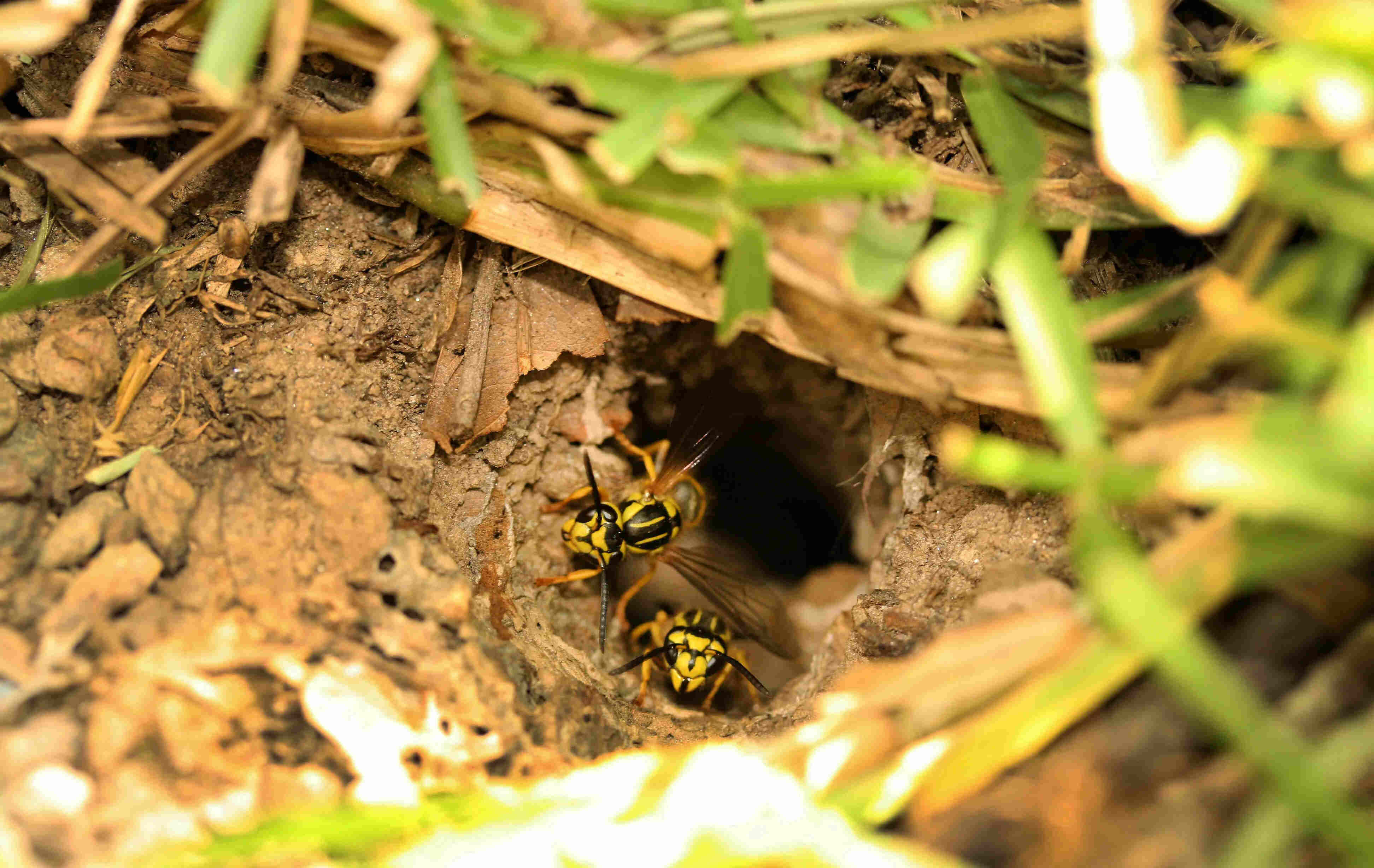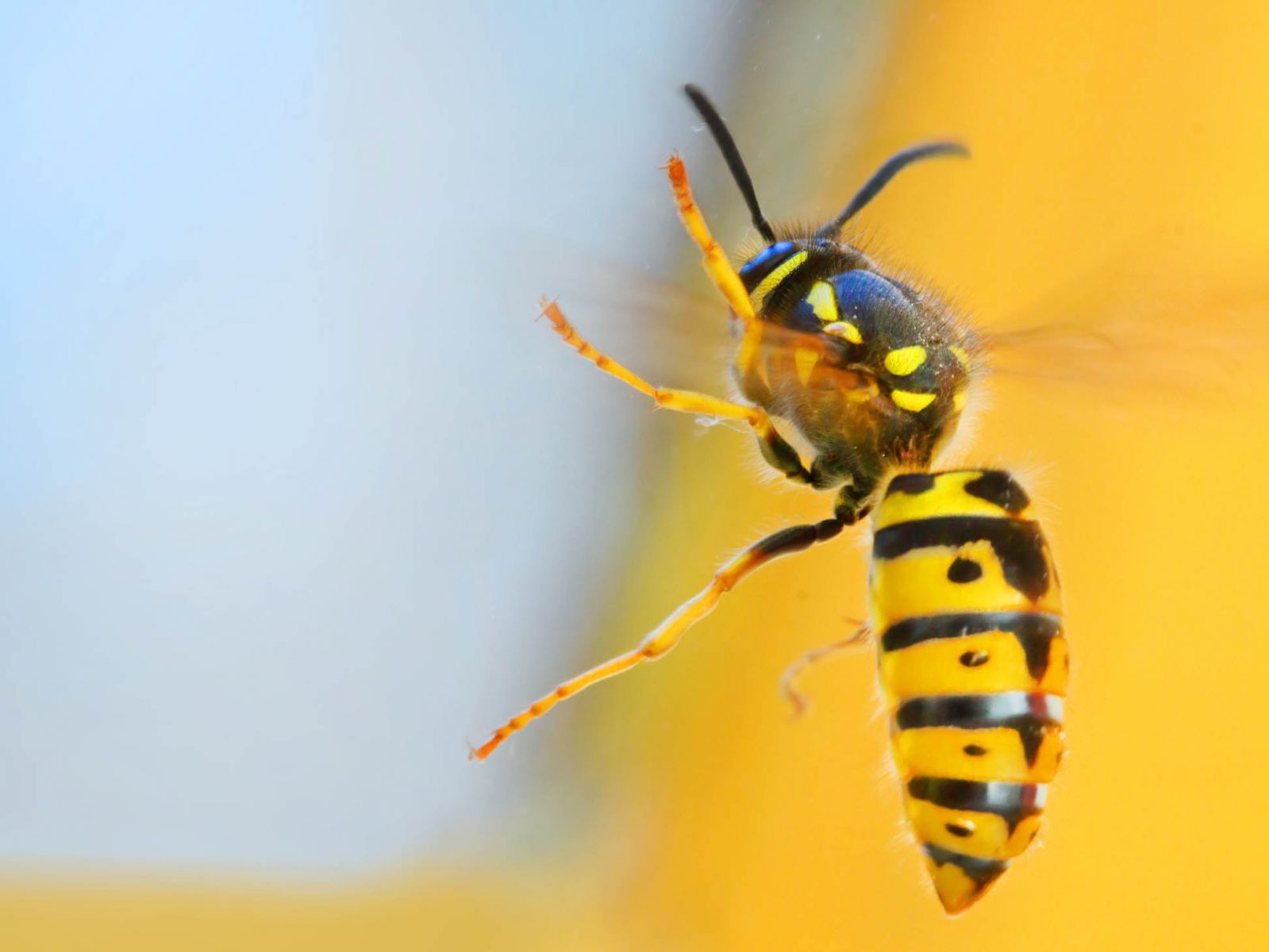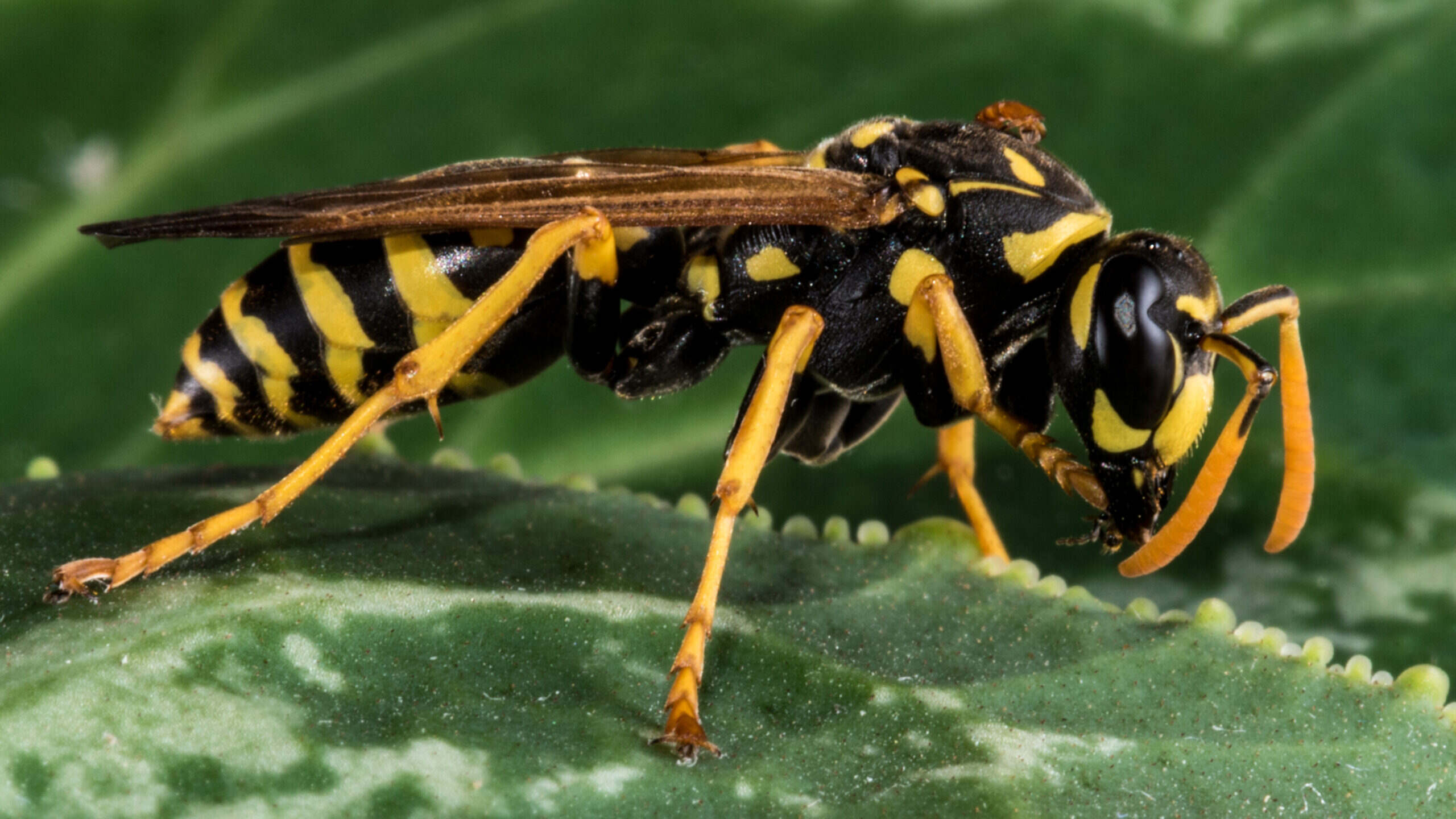Home>Maintenance & Safety>Pest Control Solutions>How Far Will Yellow Jackets Chase You


Pest Control Solutions
How Far Will Yellow Jackets Chase You
Modified: October 21, 2024
Discover effective pest control solutions to keep yellow jackets at bay. Learn how far these pests will chase you and how to protect yourself.
(Many of the links in this article redirect to a specific reviewed product. Your purchase of these products through affiliate links helps to generate commission for Storables.com, at no extra cost. Learn more)
Introduction
Yellow jackets are notorious for their aggressive nature and painful stings, often causing fear and concern among those who encounter them. Understanding their behavior and knowing how to avoid potential confrontations is crucial for anyone spending time outdoors, especially during the warmer months when these stinging insects are most active.
In this article, we will delve into the intriguing world of yellow jackets, exploring their behavior and the factors that influence their aggressiveness. We will also provide valuable tips on how to steer clear of yellow jacket encounters and what to do if you find yourself being pursued by these relentless insects.
So, buckle up and get ready to embark on a journey through the fascinating realm of yellow jackets, where we will uncover the secrets of their behavior and learn how to coexist with these formidable creatures.
Key Takeaways:
- Yellow jackets can chase intruders over 50 feet when defending their nest. Avoid provoking them by being mindful of their surroundings and taking precautions during outdoor activities.
- If chased by yellow jackets, stay calm, move purposefully, and seek shelter. Avoid swatting or jumping into water. Protect exposed areas and seek medical attention if stung.
Read more: How Harmful Are Yellow Jackets?
What Are Yellow Jackets?
Yellow jackets, scientifically known as Vespula and Dolichovespula, are predatory wasps belonging to the family Vespidae. These insects are renowned for their distinctive yellow and black markings, which serve as a warning sign of their potent sting. Unlike honeybees, yellow jackets do not have barbed stingers, allowing them to sting repeatedly, making them formidable adversaries when provoked.
These social insects live in colonies, typically constructing their nests in underground burrows, hollow trees, or man-made structures such as wall voids and attics. The colonies are founded by a single queen, who initiates the nest-building process and lays eggs. As the colony grows, the queen's primary role shifts to egg production, while the worker yellow jackets take on the responsibilities of foraging, nest maintenance, and defense.
Yellow jackets are opportunistic feeders, with their diet consisting of a wide range of food sources, including insects, fruits, and sugary substances. This adaptability allows them to thrive in various environments, from urban areas to rural landscapes. Their scavenging behavior often brings them into close proximity with humans, leading to potential conflicts and stinging incidents.
These insects are most active during the warmer months, reaching peak activity in late summer and early fall. As temperatures begin to drop, the colony's focus shifts to producing new queens and males, which will mate before the onset of winter. Once mating is complete, the original colony declines, and only the newly mated queens survive the winter to establish new colonies in the following spring.
In summary, yellow jackets are formidable stinging insects that live in colonies, exhibit aggressive behavior when threatened, and play a vital role in ecosystem dynamics. Understanding their biology and behavior is essential for minimizing potential conflicts and ensuring safe coexistence with these remarkable yet formidable creatures.
How Far Do Yellow Jackets Chase You?
Yellow jackets are known for their territorial defense and aggressive nature, especially when their nest is threatened. When a yellow jacket perceives a potential threat, it can exhibit persistent chasing behavior in an attempt to protect its colony. The distance over which a yellow jacket will chase an intruder can vary depending on several factors, including the perceived level of threat and the individual yellow jacket's temperament.
In general, yellow jackets are willing to pursue a perceived threat for a considerable distance, often exceeding 50 feet from their nest. However, it's important to note that the actual distance a yellow jacket will chase an intruder can be influenced by various factors, such as the proximity of the nest, the number of defending yellow jackets, and the intensity of the perceived threat.
When a person inadvertently disturbs a yellow jacket nest or engages in activities that are perceived as threatening, such as mowing the lawn or engaging in outdoor picnics, the defending yellow jackets may exhibit aggressive behavior and pursue the intruder over a significant distance. This chasing behavior can be alarming and potentially dangerous, especially for individuals who are allergic to yellow jacket stings or those who are unable to move quickly to escape the pursuing insects.
It's essential to recognize that yellow jackets are highly protective of their nest and will aggressively defend it against perceived threats. Understanding the potential distance over which they may chase intruders can help individuals take proactive measures to avoid confrontations and minimize the risk of being pursued by these formidable insects.
In summary, yellow jackets are capable of chasing intruders over a considerable distance when they perceive a threat to their nest. Being aware of this behavior and taking precautions to avoid disturbing their colonies can significantly reduce the likelihood of encountering aggressive yellow jackets and minimize the risk of being chased by these relentless defenders of their nests.
Factors That Influence Yellow Jackets' Aggressiveness
Several factors play a pivotal role in influencing the aggressiveness of yellow jackets, shaping their behavior and response to perceived threats. Understanding these factors is crucial for gaining insight into the dynamics of yellow jacket interactions and adopting effective strategies to minimize confrontations. Let's explore the key influencers of yellow jackets' aggressiveness:
1. Nest Proximity
The proximity of a potential threat to the yellow jacket nest is a significant determinant of their aggressiveness. When individuals or activities encroach upon the immediate vicinity of the nest, the defending yellow jackets perceive a heightened threat, triggering a more aggressive response. This proximity-based defense mechanism aims to protect the colony from potential harm, leading to increased vigilance and pursuit of intruders.
Read more: Where To Watch Yellow Jackets Free
2. Colony Size and Strength
The size and strength of a yellow jacket colony directly impact its defensive capabilities. Larger colonies with a higher population of worker yellow jackets are more adept at mounting aggressive responses to perceived threats. The presence of a substantial workforce enables the colony to mobilize a formidable defense, increasing the likelihood of aggressive behavior, including persistent chasing of intruders over significant distances.
3. Environmental Stimuli
Environmental factors, such as loud noises, vibrations, and sudden movements, can trigger heightened aggressiveness in yellow jackets. These stimuli can disrupt the colony's equilibrium, prompting a defensive response characterized by increased vigilance and pursuit of potential threats. Activities such as lawn mowing, construction work, and outdoor gatherings can inadvertently provoke aggressive behavior in yellow jackets, emphasizing the need for caution and awareness in shared outdoor spaces.
4. Seasonal Dynamics
The seasonal progression and life cycle of yellow jackets influence their aggressiveness, with peak activity and defensive behavior typically observed in late summer and early fall. During this period, the colony is focused on foraging, nest maintenance, and reproductive activities, intensifying their defensive posture. Additionally, the presence of new queens and males preparing for mating further amplifies the colony's protective instincts, contributing to heightened aggressiveness in response to perceived threats.
5. Previous Disturbances
Yellow jackets' aggressiveness can be influenced by past disturbances or encounters with potential threats. If a colony has experienced repeated disruptions or confrontations, it may exhibit heightened vigilance and a lower threshold for defensive responses. This cumulative effect of previous disturbances can contribute to an overall increase in aggressiveness, amplifying the likelihood of persistent chasing behavior when the colony perceives new threats.
By comprehensively understanding these influential factors, individuals can proactively mitigate the risk of provoking aggressive responses from yellow jackets, fostering harmonious coexistence and minimizing the potential for confrontations with these formidable stinging insects.
Read more: How To Trap Yellow Jackets
Tips for Avoiding Yellow Jacket Attacks
When it comes to navigating outdoor spaces where yellow jackets may be present, implementing proactive strategies to avoid potential confrontations is essential for ensuring a safe and enjoyable experience. By incorporating the following tips into your outdoor routines, you can significantly reduce the risk of yellow jacket attacks and minimize the likelihood of disturbing these formidable insects:
-
Awareness of Surroundings: Stay vigilant and observant of your surroundings, especially in areas known for yellow jacket activity. Be mindful of potential nesting sites, such as ground burrows, hollow trees, and building structures, and exercise caution when approaching these areas.
-
Avoidance of Fragrant Products: Refrain from using heavily scented perfumes, lotions, and hair products when spending time outdoors, as these fragrances can attract yellow jackets. Opt for unscented or lightly scented products to minimize the likelihood of drawing their attention.
-
Cover Food and Beverages: When dining or picnicking outdoors, keep food and beverages covered to prevent attracting yellow jackets with enticing aromas. Utilize tightly sealed containers and lids to minimize the release of odors that may pique the interest of foraging yellow jackets.
-
Mindful Waste Disposal: Properly dispose of food scraps and waste in sealed containers or trash receptacles to avoid creating attractants for yellow jackets. Promptly clean up any spills or food residues to deter foraging behavior near your outdoor gathering areas.
-
Caution During Yard Work: Exercise caution when engaging in yard work or outdoor activities that may disturb potential yellow jacket nesting sites. Be attentive while mowing the lawn, trimming vegetation, and performing landscaping tasks to avoid inadvertently provoking defensive responses from nearby colonies.
-
Protective Clothing: When venturing into areas with known yellow jacket presence, consider wearing long sleeves, pants, and closed-toe shoes to provide a physical barrier against potential stings. Additionally, opt for light-colored clothing, as dark colors may inadvertently attract these insects.
-
Maintain Calm Demeanor: In the event of a yellow jacket's proximity, remain calm and avoid making sudden movements or swatting at the insect. Abrupt actions can trigger defensive behavior, leading to potential stinging incidents. Instead, calmly and slowly move away from the area.
-
Professional Removal: If you suspect the presence of a yellow jacket nest near your home or frequented outdoor spaces, consider enlisting the services of pest control professionals for safe and effective nest removal. Attempting to address the nest without proper expertise can pose risks and should be avoided.
By integrating these proactive tips into your outdoor practices, you can minimize the likelihood of yellow jacket encounters and mitigate the potential for stinging incidents. Cultivating awareness and adopting preventive measures are key components of fostering a harmonious coexistence with these remarkable yet formidable insects.
What to Do If You Are Being Chased by Yellow Jackets
If you find yourself being pursued by yellow jackets, it's crucial to remain calm and take swift, decisive actions to minimize the risk of stings and safely navigate the situation. Here are essential steps to follow if you are being chased by these formidable insects:
-
Assess the Direction: Quickly assess the direction from which the yellow jackets are approaching. This awareness can help you determine the best escape route and avoid inadvertently running into additional yellow jacket defenders.
-
Move Away Calmly: While it may be instinctive to sprint away in a panic, it's important to move away calmly and purposefully. Running erratically or flailing your arms can agitate the yellow jackets further, increasing the likelihood of stings. Instead, maintain a steady pace and move in a straight line to create distance between yourself and the pursuing insects.
-
Seek Shelter: If possible, seek shelter in an enclosed structure or vehicle to create a physical barrier between yourself and the yellow jackets. Close the doors and windows to prevent their entry, providing a safe refuge until the insects disperse.
-
Avoid Swatting or Aggressive Movements: Refrain from swatting at the yellow jackets or making aggressive movements, as these actions can escalate their defensive behavior. Instead, focus on calmly and steadily moving away from the area while minimizing sudden gestures.
-
Protect Exposed Areas: If you are unable to seek shelter immediately, protect exposed areas of your body, such as the face, neck, and hands, by covering them with clothing or using your hands to shield vulnerable areas. This can help reduce the risk of stings while you navigate away from the pursuing yellow jackets.
-
Do Not Jump into Water: Contrary to popular belief, jumping into water when being chased by yellow jackets is not a recommended course of action. Yellow jackets can wait at the water's surface and sting when you resurface, posing additional risks.
-
Remain Still if Stung: If you are stung by a yellow jacket, try to remain still to minimize the release of alarm pheromones that can attract more yellow jackets. Once you are in a safe location, carefully remove the stinger and clean the affected area with soap and water.
-
Seek Medical Attention if Necessary: If you experience symptoms of an allergic reaction, such as difficulty breathing, swelling, or dizziness, seek immediate medical attention. Allergic reactions to yellow jacket stings can be severe and require prompt intervention.
By following these proactive steps, you can effectively navigate a situation where you are being chased by yellow jackets, minimizing the risk of stings and ensuring your safety. Cultivating awareness of yellow jacket behavior and adopting appropriate responses can empower you to confidently address such encounters and mitigate potential risks.
Frequently Asked Questions about How Far Will Yellow Jackets Chase You
Was this page helpful?
At Storables.com, we guarantee accurate and reliable information. Our content, validated by Expert Board Contributors, is crafted following stringent Editorial Policies. We're committed to providing you with well-researched, expert-backed insights for all your informational needs.














0 thoughts on “How Far Will Yellow Jackets Chase You”